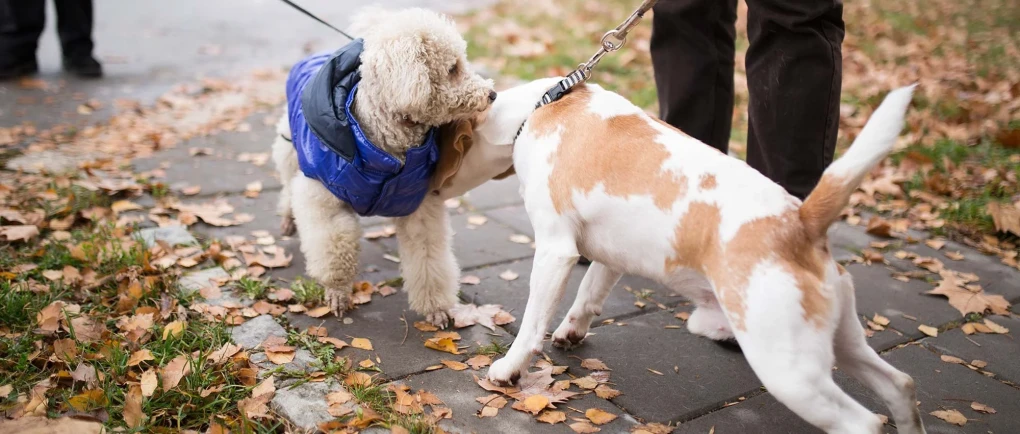Introducing Your Dog to a New Neighborhood

Moving to a new neighborhood can be an exciting new adventure, but it also brings many changes that can be stressful and overwhelming for your dog. Taking time to properly introduce your dog to their new surrounding and neighbors will help them adjust and learn to enjoy their new home. This guide covers tips for moving preparation, meeting neighbors, positive training, exercise, and easing anxiety in your dog's neighborhood transition.
Preparing for the Move
To set your dog up for success in their new community, start preparations well in advance of moving day:
- Keep routines consistent in the weeks before the move to avoid additional stress. Stick to regular feeding, walking, play, and training schedules.
- Gather supplies like medications, medical records, food, treats, toys, beds, and leashes to bring on moving day. Pack a special toy or blanket with your scent to comfort your dog.
- Reserve dog-friendly lodging if needed during the packing and moving transition. scope out pet policies and on-site amenities.
- Ask your vet about anxiety medication for especially high-strung dogs before the move. Have your dog's health checked and vaccinations up to date.
- Confirm pet policies of your new home. Some communities restrict dogs by size or breed. Make sure yours is approved.
- Purchase updated ID tags with your dog's name and new address. Include your mobile number if possible.
- Research nearby conveniences like parks, trails, doggy daycares, groomers, and veterinarians at your new location.
These steps will help set your dog up for an easier transition.
Introducing Your Dog to New Neighbors
Once settled into the new home, begin introducing your dog to neighbors using positive training methods:
- Meet outdoors in neutral territory like on neighborhood walks before inviting dogs into homes. Keep initial greetings brief.
- Keep dogs leashed and give space to allow gradual acquaintance from a comfortable distance. Let them sniff each other delicately at first.
- Watch body language for any signs of tension like stiffening, growling, raised hackles, or prolonged staring, and redirect their attention before any escalation.
- Provide plenty of praise and treats when your dog remains calm and polite, reinforcing good manners around new dogs.
- Avoid dog parks initially until you learn which neighborhood dogs have compatible play styles with yours. Start with mellow one-on-one play sessions.
- Exchange contact info with neighbors so you can schedule socialization sessions and monitor all dogs' comfort levels.
- Role model polite interactions when meeting neighbors without dogs, asking to greet their dog before petting, and keeping your dog from jumping.
With patience and positive reinforcement, your dog will learn to enjoy the company of their new neighborhood pals.
Walking Your Dog in a New Area
Strolling through the new neighborhood is a key part of your dog's adjustment and socialization. Follow these tips for safe, engaging walks:
- Map out pet-friendly routes ahead of time to identify parks, nature trails, water access points, waste stations, and shady rest areas.
- Bring waste bags, water, collapsible bowl and dog first aid essentials when exploring new areas. Respect neighborhood cleanliness by immediately picking up waste.
- Keep your dog leashed initially until you determine where off-leash play is allowed. Use longer leads to allow safe exploring.
- Bring high-value treats and reward your dog for sticking close and focusing on you instead of getting overstimulated by their surroundings.
- Start with short walks close to home and gradually work up to longer routes as your dog relaxes. Don't forcefully drag anxious dogs.
- Mix up terrain like sidewalks, trails, grass, and dog parks once your dog is comfortable. Environmental diversity is enriching.
- Make a doggy bucket list of neighborhood spots to explore like hiking trails, lakes, outdoor malls, or restaurants with patio dining and take it at your dog's pace.
Your dog will soon eagerly await their neighborhood outings!
Easing Your Dog's Anxiety in a New Home
Despite your best efforts, some dogs still have trouble settling into a new home. Here are tips for relieving anxiety:
- Maintain routines around walking, feeding, playtime, training, and interactions. Consistency and predictability are reassuring.
- Use soothing natural supplements like Adaptil pheromone collars or calming chews with L-theanine and melatonin. Ask your vet for recommendations.
- Play calming music and keep the home quiet in the early days to prevent overstimulation.
- Provide engaging puzzle toys stuffed with treats to distract them from stress and expend mental energy.
- Purchase pet cameras so you can monitor and reassure your anxious dog when separated.
- Use crates as safe dens, not punishment. Make it cozy with blankets and toys that smell like home.
- Ask neighbors to avoid fireworks, loud music, or other sudden noises that could startle your dog as they adjust.
- See your vet if anxiety persists and significantly impacts your dog's eating, bathroom habits, or damages the home. Medication may help in extreme cases.
With loving support and patience, your dog will settle in and thrive in their new home and neighborhood in no time!
Conclusion
Moving presents many changes that can overwhelm your beloved dog. Help ease their transition by keeping moving preparations gradual, maintaining consistent routines, slowly introducing them to neighborhood sights and sounds, rewarding polite behavior and calmness during encounters, providing mental stimulation, and seeking help if anxiety persists. Soon your dog will be happily acquainted with their new community!
Let me know if you would like me to modify or expand on any part of this article outline and keywords. I aimed to cover helpful tips for the major stages of introducing a dog to a new neighborhood - preparation, meeting neighbors, walking, and managing anxiety. Please provide any feedback or changes needed!